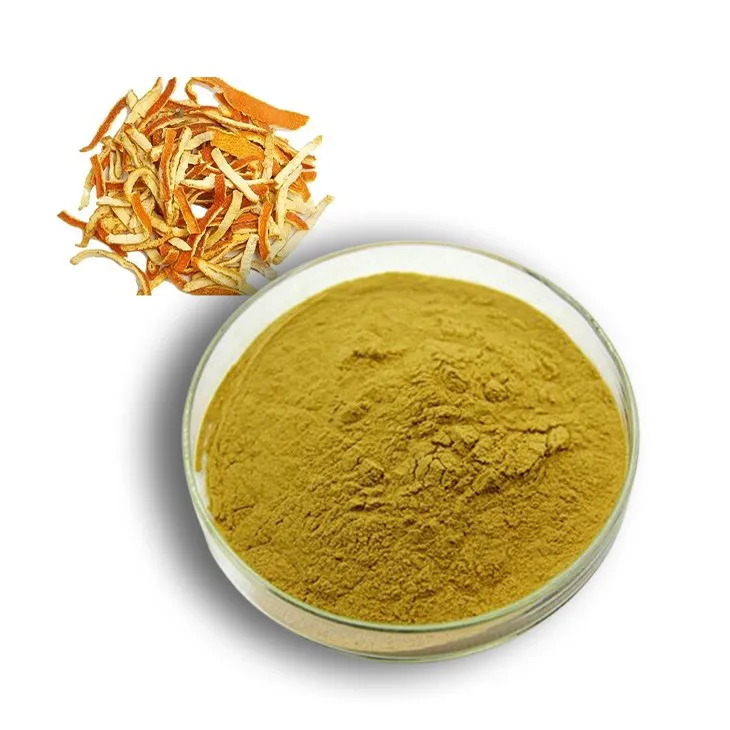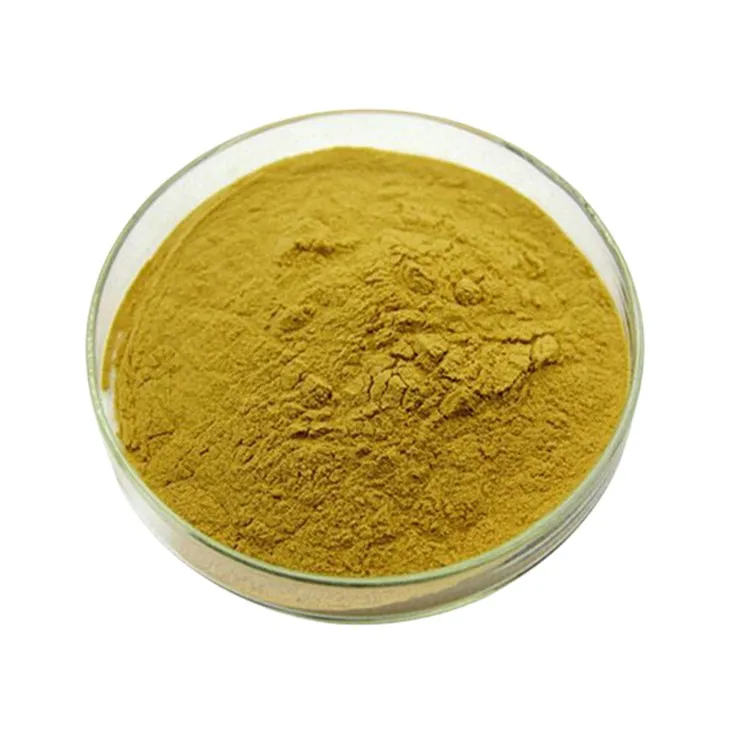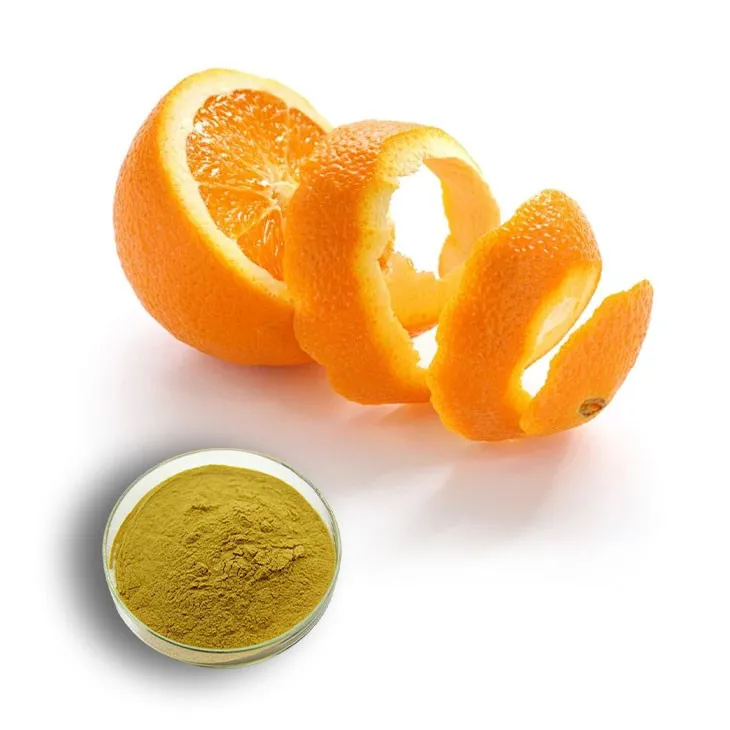- 0086-571-85302990
- sales@greenskybio.com
Benefits of Hesperidin in Cattle Feed.
2024-11-13

Introduction
Hesperidin is a flavonoid that has been increasingly recognized for its potential applications in livestock nutrition, particularly in cattle feed. This compound, which is commonly found in citrus fruits, offers a range of benefits that can contribute to the overall health, growth, and productivity of cattle.

Anti - Inflammatory Effects
1. Understanding Inflammation in Cattle
Inflammation in cattle can be caused by various factors such as infections, stress, or poor diet. It is a natural response of the body's immune system, but chronic inflammation can lead to a host of health problems. For example, it can affect the normal functioning of internal organs, reduce feed efficiency, and slow down growth rates.
2. How Hesperidin Reduces Inflammation
Hesperidin exerts its anti - inflammatory effects through multiple mechanisms. It can modulate the activity of inflammatory cells, such as macrophages and neutrophils. These cells play a crucial role in the immune response, and by regulating their function, hesperidin can prevent an over - exuberant inflammatory reaction.
Moreover, hesperidin can also interfere with the production of inflammatory mediators. These are substances like cytokines and prostaglandins that are responsible for promoting inflammation. By reducing the levels of these mediators, hesperidin helps to keep inflammation in check.
3. The Impact on Cattle Health
By reducing inflammation, hesperidin can significantly improve the health of cattle. Cattle with lower levels of inflammation are less likely to suffer from diseases such as respiratory infections or joint inflammations. This not only reduces the need for veterinary treatment but also ensures that the animals are in a better physiological state for growth and production.

Enhancement of Nutrient Absorption
1. Importance of Nutrient Absorption in Cattle
Cattle require a balanced intake of various nutrients, including vitamins, minerals, and amino acids, for proper growth, reproduction, and overall health. However, the ability to absorb these nutrients efficiently from the feed is crucial. Poor nutrient absorption can lead to deficiencies, which in turn can cause a range of problems such as stunted growth, reduced milk production in dairy cows, and decreased fertility.
2. Role of Hesperidin in Nutrient Absorption
Hesperidin has been shown to enhance the absorption of certain nutrients. It can improve the intestinal barrier function, which is essential for preventing the leakage of nutrients and the entry of harmful substances into the bloodstream. A healthy intestinal barrier allows for better absorption of nutrients such as vitamins (e.g., vitamin C and some B - vitamins) and minerals (e.g., calcium and iron).
Furthermore, hesperidin can interact with transporters in the intestinal cells that are responsible for moving nutrients across the cell membrane. By facilitating the function of these transporters, it can increase the uptake of nutrients from the gut lumen into the bloodstream, ensuring that the cattle can utilize the nutrients effectively.
3. Long - Term Benefits for Cattle Growth and Production
Improved nutrient absorption due to hesperidin in the feed has long - term benefits for cattle. In growing calves, it can lead to more rapid and healthy growth, resulting in animals that reach market weight sooner. In dairy cows, better nutrient absorption can translate into increased milk production, both in terms of quantity and quality. The milk may have higher levels of essential nutrients, which is beneficial for human consumption as well.

Positive Influence on Reproductive Performance
1. Reproductive Challenges in Cattle
Reproduction is a crucial aspect of cattle farming. However, there are several challenges that can affect the reproductive performance of cattle. These include hormonal imbalances, stress - related factors, and nutritional deficiencies. Hormonal imbalances, in particular, can lead to problems such as irregular estrous cycles, low conception rates, and high rates of early embryonic loss.
2. How Hesperidin Affects Hormonal Balance
Hesperidin can play a role in improving hormonal balance in cattle. It has been shown to interact with the endocrine system, which is responsible for regulating hormone production and secretion. For example, it may influence the production of reproductive hormones such as estrogen and progesterone in female cattle, helping to regulate their estrous cycles more effectively.
In male cattle, hesperidin may also have an impact on testosterone levels, which are important for sperm production and libido. By maintaining proper hormonal balance, hesperidin can enhance the reproductive capabilities of both male and female cattle.
3. Implications for Cattle Breeding
The positive impact of hesperidin on reproductive performance has significant implications for cattle breeding. Higher conception rates mean that more cows can become pregnant, leading to an increase in the number of calves born. This is especially important for beef cattle production, as it directly affects the size of the herd and ultimately the amount of meat produced. In dairy cattle, improved reproductive performance can also lead to a more stable milk supply, as there will be a continuous supply of replacement heifers.

Other Potential Benefits
1. Antioxidant Properties
Hesperidin has antioxidant properties, which can be beneficial for cattle. Oxidative stress can occur in cattle due to various factors such as exposure to environmental pollutants, certain diseases, or high - energy diets. Antioxidants like hesperidin can neutralize free radicals, which are highly reactive molecules that can damage cells and tissues. By reducing oxidative stress, hesperidin can help maintain the integrity of cells in various organs, such as the liver, heart, and lungs, and contribute to overall health.
2. Impact on Immune Function
The anti - inflammatory and antioxidant effects of hesperidin also have implications for the immune function of cattle. A well - regulated immune system is essential for protecting the animals from infectious diseases. By reducing inflammation and oxidative stress, hesperidin can support the immune system, making the cattle more resistant to pathogens. It may also enhance the activity of immune cells, such as lymphocytes and macrophages, which are involved in the defense against infections.
3. Potential Role in Stress Management
Cattle can experience stress due to factors like overcrowding, transportation, or changes in diet. Stress can have a negative impact on their health and productivity. Hesperidin may play a role in stress management in cattle. Although the exact mechanisms are not fully understood, it is possible that its anti - inflammatory and antioxidant effects can help the animals cope better with stress. For example, it may reduce the physiological responses to stress, such as increased cortisol levels, which can have harmful effects on growth, reproduction, and immune function.
Conclusion
In conclusion, hesperidin offers multiple benefits when included in cattle feed. Its anti - inflammatory effects, enhancement of nutrient absorption, positive influence on reproductive performance, and other potential benefits such as antioxidant properties, impact on immune function, and potential role in stress management make it a valuable addition to cattle nutrition. By incorporating hesperidin into cattle feed, farmers can potentially improve the health, growth, and productivity of their cattle, leading to more efficient and sustainable livestock production.
FAQ:
What is the main anti - inflammatory mechanism of hesperidin in cattle feed?
Hesperidin contains certain bioactive components that can interact with the immune system in cattle. It may modulate the production of inflammatory mediators such as cytokines. By regulating these mediators, it can effectively reduce the inflammatory response in the body.
How does hesperidin enhance nutrient absorption in cattle?
Hesperidin can improve the integrity of the intestinal mucosa in cattle. A healthy intestinal mucosa is crucial for the absorption of vitamins and minerals. It may also influence the function of transport proteins in the intestine, which are responsible for carrying nutrients across the intestinal wall, thus facilitating better nutrient absorption.
Can hesperidin completely replace other additives for improving cattle's reproductive performance?
No. While hesperidin has a positive impact on the hormonal balance and reproductive performance of cattle, it cannot completely replace other necessary additives. Reproductive performance is a complex trait that is influenced by multiple factors, including genetics, nutrition, and management. Hesperidin is just one of the beneficial components that can contribute to improving reproductive performance, and it is often used in combination with other appropriate additives.
What is the appropriate dosage of hesperidin in cattle feed?
The appropriate dosage of hesperidin in cattle feed depends on various factors such as the age, weight, and health status of the cattle. Generally, it is recommended to start with a low dosage and gradually increase it while closely monitoring the cattle's response. In most cases, the dosage range may be between [X] grams per day for young calves to [Y] grams per day for adult cattle, but specific dosages should be determined based on scientific research and field trials.
How long does it take for hesperidin to show its effects on cattle?
The time it takes for hesperidin to show its effects on cattle can vary. For the anti - inflammatory effect, some improvements may be observed within a few days to a week, especially if the cattle are already experiencing inflammation. However, for the effects on nutrient absorption and reproductive performance, it may take several weeks to months, as these processes are relatively long - term and complex physiological changes.
Related literature
- The Role of Hesperidin in Animal Nutrition"
- "Hesperidin and Livestock Health: A Comprehensive Review"
- "Beneficial Effects of Hesperidin on Cattle Reproduction"
- ▶ Hesperidin
- ▶ Citrus Bioflavonoids
- ▶ Plant Extract
- ▶ lycopene
- ▶ Diosmin
- ▶ Grape seed extract
- ▶ Sea buckthorn Juice Powder
- ▶ Fruit Juice Powder
- ▶ Hops Extract
- ▶ Artichoke Extract
- ▶ Mushroom extract
- ▶ Astaxanthin
- ▶ Green Tea Extract
- ▶ Curcumin
- ▶ Horse Chestnut Extract
- ▶ Other Product
- ▶ Boswellia Serrata Extract
- ▶ Resveratrol
- ▶ Marigold Extract
- ▶ Grape Leaf Extract
- ▶ New Product
- ▶ Aminolevulinic acid
- ▶ Cranberry Extract
- ▶ Red Yeast Rice
- ▶ Red Wine Extract
-
Acerola Juice Powder
2024-11-13
-
Stevia Extract
2024-11-13
-
Cassia Seed Extract
2024-11-13
-
Scutellaria Extract
2024-11-13
-
Buckthorn bark extract
2024-11-13
-
Marigold Extract
2024-11-13
-
Clove Powder
2024-11-13
-
Rose Hip Extract
2024-11-13
-
Quercetin
2024-11-13
-
Resveratrol extract
2024-11-13





















